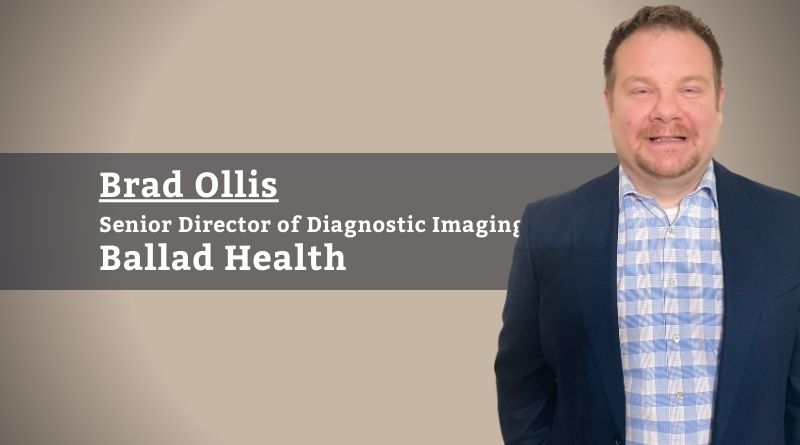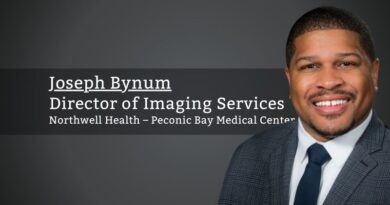Medical Imaging “People” Challenges
By Brad Ollis, Senior Director of Diagnostic Imaging, Ballad Health
Medical imaging is one of the most rewarding and vital fields within the healthcare industry. Medical imaging impacts a high percentage of all patients treated and provides valuable information to clinicians. Like most aspects of health care, medical imaging is a “People Business.” Medical imaging serves people by people using specialized equipment. So, it takes many types of “people”, including technologists, reading physicians, and the basis of healthcare, the patients. The biggest challenge medical imaging faces today is the lack of “People.”
In most cases, it is the lack of people, including the lack of technologists. Technologists today are highly educated and trained in a specific imaging discipline to acquire high quality images for accurate interpretations. These individuals are coveted and highly sought after. With almost endless opportunities (hospitals, physician offices, independent diagnostics testing facilities, etc.), these individuals seek out workplaces that provide support, professional growth, flexibility, and respect. The tool we have found most impactful is listening to these individuals, understanding their needs, and anticipating what motivates them. Technologists are obviously there to get paid well and make a living, but to truly keep more of them requires awareness of motivation. Motivators include things like flexible shifts, cross-training availability, ample time off, involvement in operation decisions, and a stellar array of benefits, to name a few.
The people of imaging! Technologists, Radiologists, and Patients (and many others) represent the beautiful part of this industry. It is an amazing synergy between human interactions and technology.
Utilizing active daily huddles and short meetings to engage the staff helps keep them informed. Celebrate victories and talk openly about issues. Affiliations with accredited technologist programs are key avenues to providing depth to departments that allow for time off for technologists. Highly efficient workflows allow the technologist to be efficient with patient flow and maximize daily throughput. Training and feedback are needed to provide them with the tools and understanding on how to best treat the patient. Amble technology and fully integrated systems allows for an efficient flow of information between radiologists and technologists.
Reading physicians “People” for medical imaging come in many different varieties (Radiologist, Cardiologist, Orthopedist, OBGYN, etc.). Like technologists, individuals are in short supply, but thankfully with the emergence of technology, this has brought interpretations to areas that wouldn’t be available otherwise. Remote reading utilizing high-speed networks has brought 24/7 coverage with sub-specialized reads to many facilities. Imaging is functional in many settings, from large academic medical centers to a patient’s home with a portable X-ray unit. Images are seamlessly transmitted to a clinician’s screen. It is important to provide all pertinent information (Prior imaging, Patient history) to the clinicians in an easily retrievable manner. Technology has allowed the industry to continue to acquire millions of images a day that are reviewed timely by highly trained clinicians using voice recognition technology to deliver life-saving information. Modern voice recognition technology allows the reading physician to quickly speak the words they want in the report while providing options to embed endless information in their final report. This allows these individuals to live where they want but provide their expertise to areas that otherwise would not be serviced. Offices are often set up with the latest technology to provide soft lighting, proper acoustics, workstations that allow standing or sitting, and limited interruptions. Technology such as video chat and integrated instant messaging allows for collaboration for remote readers and mitigation of interruptions.
Patients “People” today are more informed and better educated about the services available. Internet reviews and governmental data provides an endless amount of decision-making information. The basic expectation for patients is to receive the correct study, in a time-efficient manner with immediate results. Some differentiators are bleeding-edge equipment (Advanced MRI Systems, Dual Source and faster CT scanners.), AI Technology (Smart Reading List, Reading Aids), and world-class customer service. Patients are also noise and radiation dose conscious. The expectations are for full sound systems providing on-demand selectable music for long studies and procedures. Using patient feedback is key to stay on top of the evolving needs of today’s patients. Relevant surveying while sharing the information (Good and Bad) with all the “people” involved provides a competitive edge. Patients want immediate access to their images and reports (Image Sharing Services). This allows them to share the information with anyone on the care team.
The people of imaging! Technologists, Radiologists, and Patients (and many others) represent the beautiful part of this industry. It is an amazing synergy between human interactions and technology. The technologists have access to multimillion dollar equipment which allows them glimpses inside other humans with detail. Radiologists are provided with highly detailed images and can evaluate them using today’s tools (AI, CAD, High-Resolution Monitors, etc.) that provide life-changing information. The patients have the benefits of receiving detailed information in most cases by a minimally invasive means with almost immediate results. To combat the medical imaging “People” challenge combines engagement techniques and technology. The current market for people in health care is tremendous and as competitive as it has been in decades. Even though not perfect, we have found success with constant feedback from everyone involved and the adoption or implementation of modern technology.



